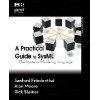- Out-of-Stock



No product available!
No product available!
Buy the base and top of this case separately to mix-and-match your choice of colors. Recommended to protect the ODROID-XU4 board from accidental damage.
No product available!
WIFI-LPT100-B is a small module that enables communication using a wireless WiFi network. It has a UART interface, and is characterized by low energy consumption.
No product available!
No product available!
Needle bending needle, for precise glue application, Flux 0,311mm internal diameter and 1.26mm outside diameter
No product available!
USB - LIN bus converter module. It allows you to connect devices to your computer via the LIN bus. LIN USB CONVERTER (LUC)
No product available!
ROSA3D filament made of thermoplastic polyurethane. 0.5 kg of filament with a diameter of 1.75 mm is wound on the spool. ROSA3D ROSA-Flex 96A Green
No product available!
Assembled night lamp controller with time system. AVT1969 C
No product available!
Camera module with a resolution of 13 MP equipped with an image sensor AR1335. It is equipped with a FoV 50° lens with an M12 mount. Designed for Raspberry Pi and Jetson Nano. ArduCAM B0277
No product available!
No product available!
No product available!
The Explore magnetometer allows you to measure the magnetic field in three planes XYZ, equipped with a digital MAG3110 sensor. MOD 64
No product available!
2 Mpx camera module with OV2640 sensor with a matrix resolution of 1600 x 1200 px and transmission speeds up to 60 FSP. Communication via the SCCB interface. Possible JPEG compression in real time. ArduCAM B0011
No product available!
No product available!
No product available!

